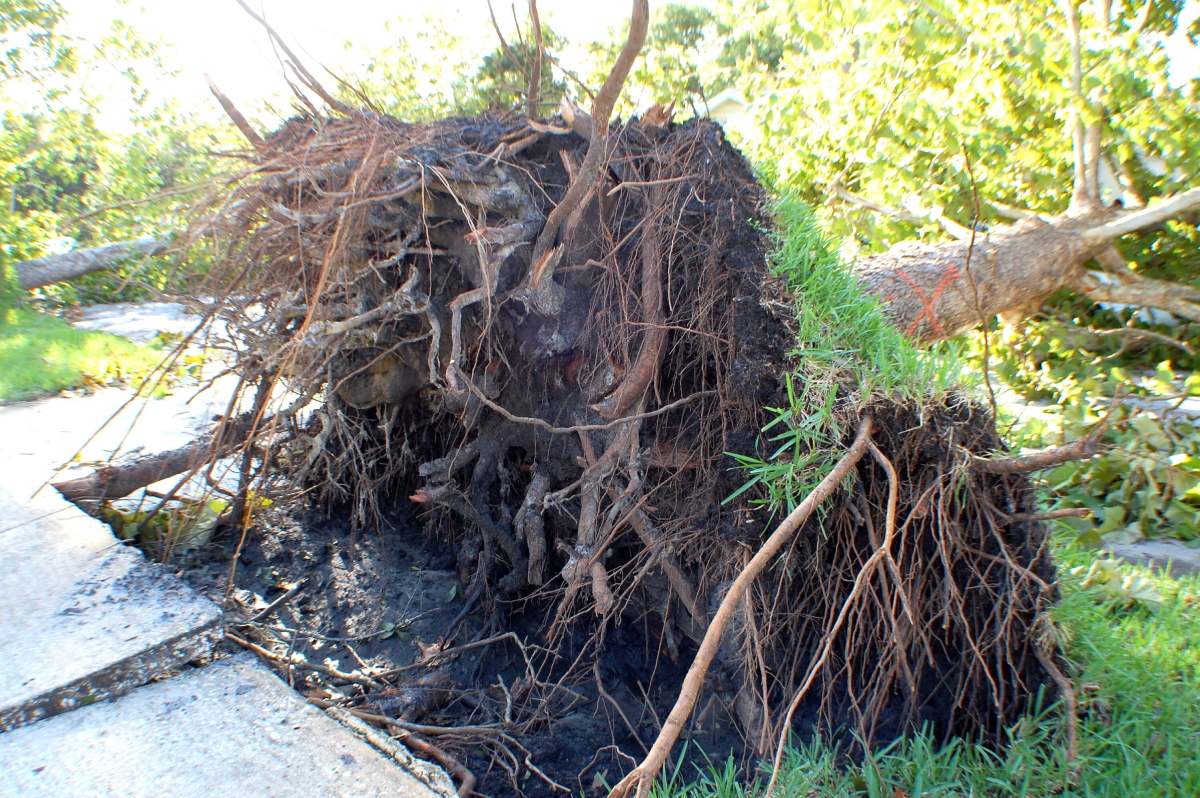Do you have stunning trees surrounding your home? While they provide shade, beauty, and a habitat for wildlife, these impressive plants can also secretly endanger your property. Tree roots, often ignored, can actually cause major damage to your home’s foundation, plumbing, and overall landscape.
In this article, we’ll explore how tree roots can affect your property and offer crucial tips for preventing damage and protecting your home. But before we get into that, let’s first identify the signs that tree roots might be wreaking havoc on your home.
You might also read:
- Dealing with Wasp Nests: What You Should Know?
- What should we do if we get stung by a wasp? What should I do if there is a wasp nest near my house?
What are the signs that tree roots are damaging your home?
Tree roots can be a blessing for your yard’s health but a nightmare for your home’s foundation and underground structures. Here’s a breakdown of clear signs indicating that tree roots might be causing damage to your home:
- Cracks in Walls or Floors: Keep an eye out for any sudden appearance of cracks in your walls or floors. Tree roots exert pressure on the foundation, leading to structural damage. These cracks can start small but gradually widen over time, indicating a serious problem.
- Uneven or Sunken Areas: Notice any unevenness or sinking in certain areas of your home? Tree roots growing underneath the foundation can cause it to become uneven or even sink in specific spots. This can affect the stability of your entire home.
- Clogged or Slow-Draining Plumbing: If you’re experiencing frequent clogs or slow drainage in sinks, toilets, or showers, tree roots may be to blame. They can infiltrate sewer lines, obstructing the flow of water and causing plumbing issues inside your home.
- Sewage Backup: A particularly unpleasant sign of tree root damage is sewage backup. When roots invade sewer lines, they can block the passage of waste, leading to sewage backing up into your home through drains or toilets. This not only causes a mess but also poses health risks.
- Lush Patches of Grass: Keep an eye on your lawn for any unusually lush and green patches. These areas could indicate a leaking sewer line caused by tree roots puncturing it underground. The excess moisture from the leak promotes grass growth, making these patches stand out.
- Tree Proximity to Home: Consider the proximity of large trees to your home. If you have trees with aggressive root systems growing too close, the risk of root damage to your home increases. Be cautious, especially with trees known for extensive root growth.
- Visible Root Damage: Sometimes, you may notice tree roots protruding from the ground near your home’s foundation. This is a clear indication that the roots are growing dangerously close to your home and could potentially cause damage if left unchecked.
- Foundation Shifts: Keep an eye out for any noticeable shifts in your home’s foundation. Difficulty in closing doors or windows properly can indicate that tree roots are causing structural damage, leading to misalignment.
If you notice any of these signs, it’s crucial to take action promptly to prevent further damage to your home. Consulting with a professional arborist or structural engineer can provide insights into the extent of the damage and the best course of action to mitigate it. Early detection and intervention can save you significant time, money, and stress in the long run.

Factors that influent tree root damage
Tree root damage to your home can be influenced by various factors, including tree species, soil conditions, and the proximity of the tree to your property. Understanding these factors can help you identify potential risks and take proactive measures to protect your home.
Tree species and root depth
Different tree species have varying root characteristics. Some trees, like willows and poplars, have invasive root systems that aggressively seek out water and can extend considerable distances from the trunk. These types of trees are more likely to cause damage to underground utilities, foundations, and pavement. On the other hand, trees with shallower root systems, such as maples and birches, are generally less problematic.
When selecting trees for your property, consider the potential impact of their root systems. If you choose trees with invasive roots, you may encounter issues such as clogged pipes, cracked foundations, and uneven sidewalks or driveways. Opting for trees with less aggressive root systems can help mitigate these risks.
Soil conditions
The health and development of tree roots are greatly influenced by soil conditions. Soil compaction, often caused by heavy foot traffic or construction activities, restricts root growth and can lead to roots spreading horizontally near the surface. As a result, trees may become more susceptible to toppling in strong winds, and their roots may pose a greater risk of causing damage to nearby structures.
Additionally, soil composition affects the ability of roots to penetrate and absorb water and nutrients. Soil types with poor drainage or low fertility may limit root growth and contribute to tree stress, making them more vulnerable to pests, diseases, and environmental factors.
To promote healthy root development, consider aerating compacted soil, incorporating organic matter to improve soil structure, and providing adequate irrigation and mulching to retain moisture.
Proximity of the tree
The distance between trees and your property plays a crucial role in determining the likelihood of root damage. When trees are planted too close to buildings, underground utilities, or paved surfaces, their roots may compete for space and resources, leading to potential conflicts.
Roots can infiltrate sewer lines, water pipes, and septic systems, causing blockages and leaks. They can also exert pressure on foundations, causing cracks and structural instability. Furthermore, tree roots may disrupt sidewalks, driveways, and other hardscape features, resulting in costly repairs and maintenance.
Before planting trees near your home, consider their mature size and root spread. Allow sufficient distance between trees and structures to minimize the risk of root damage. If you already have trees in close proximity to your property, monitor their growth and consider implementing root barriers or other protective measures to prevent damage.

How to prevent damage caused by tree roots?
Preventing damage caused by tree roots is crucial for maintaining the integrity of your home and property. By implementing proactive measures, you can minimize the risk of costly repairs and ensure the long-term health and stability of your landscape.
Here’s a comprehensive guide on how to prevent damage caused by tree roots:
1. Choose the Right Tree Species
Selecting tree species with non-invasive root systems is the first step in preventing root damage. Research and choose trees that are known for having shallow or less aggressive roots, such as Japanese maple, dogwood, or cherry trees. These species are less likely to cause problems with underground utilities, foundations, and pavement.
2. Consider Mature Size and Root Spread
Before planting trees on your property, consider their mature size and root spread. Allow ample distance between trees and structures, including buildings, fences, sidewalks, and driveways. This helps prevent root intrusion into underground pipes and prevents the roots from exerting pressure on foundations and hardscape features.
3. Install Root Barriers
Root barriers are physical barriers made of materials like plastic or metal that are installed underground to redirect tree roots away from vulnerable areas. These barriers can be installed during tree planting or retrofitted around existing trees to prevent root damage to underground utilities and structures.
4. Provide Proper Tree Care
Maintaining the health and vigour of trees is essential for minimizing root-related issues. Proper tree care practices, such as regular watering, mulching, and fertilizing, help promote strong root development and overall tree health. Pruning trees to remove dead or diseased branches can also reduce stress and minimize the risk of root problems.
5. Manage Soil Conditions
Healthy soil is essential for supporting robust root growth and minimizing root-related issues. Improve soil structure and fertility by incorporating organic matter, such as compost or mulch, into the soil. Avoid soil compaction by minimizing foot traffic and heavy machinery in tree root zones. Consider aerating compacted soil to improve root penetration and water infiltration.
6. Monitor and Address Issues Promptly
Regularly inspect trees and their surroundings for signs of root damage, such as cracks in walls or pavement, clogged drains, or uneven soil surfaces. If you notice any signs of root damage, take prompt action to address the issue before it escalates. Consult with a professional arborist or landscape contractor for expert advice and assistance. Companies like AB Trees offer professional services and expertise in tree care and root management.
7. Plan Landscape Design Thoughtfully
When designing your landscape, consider the potential impact of trees on nearby structures and utilities. Avoid planting trees in areas where their roots may interfere with underground pipes or utility lines. Instead, opt for strategic placement of trees to enhance aesthetics while minimizing the risk of root-related issues.
8. Regular Maintenance
Routine maintenance of trees and their surroundings is essential for preventing root damage. Keep tree roots pruned to prevent them from encroaching on underground utilities and structures. Clear debris and vegetation from around tree roots to improve air and water circulation. Monitor soil moisture levels and adjust watering as needed to prevent overwatering or drought stress.
Final thought
Preventing damage caused by tree roots requires careful planning, regular maintenance, and proactive measures. By selecting appropriate tree species, managing soil conditions, and implementing preventive strategies, you can minimize the risk of root-related issues and preserve the health and beauty of your landscape for years to come.
Consulting a professional like AB Trees can provide valuable guidance and assistance in implementing effective root management strategies tailored to your specific needs and circumstances.






